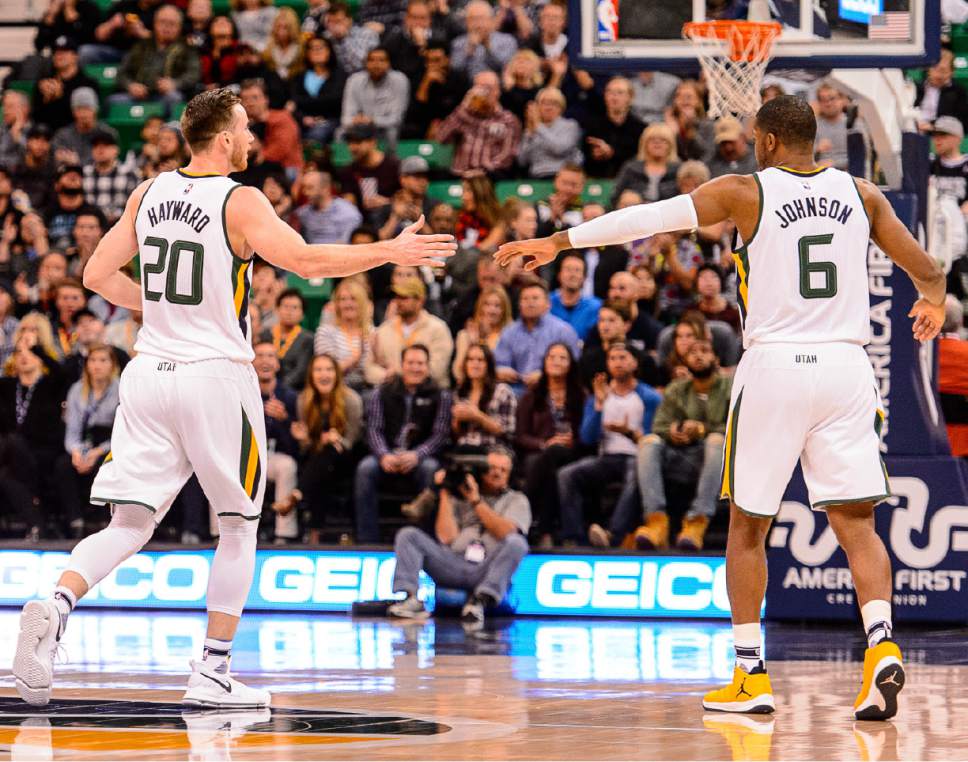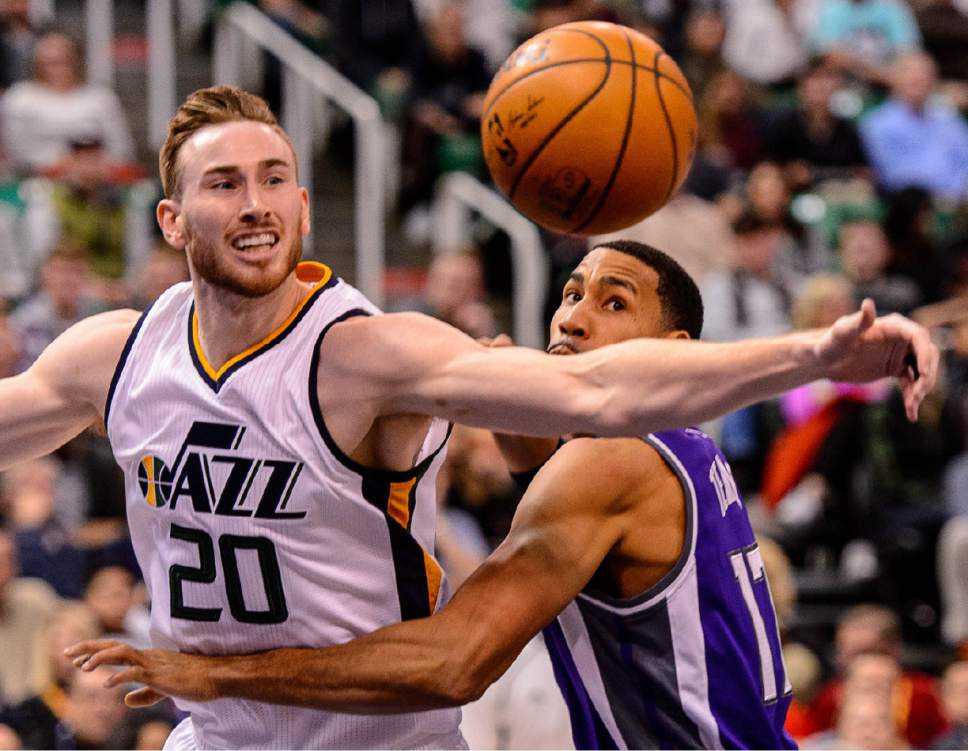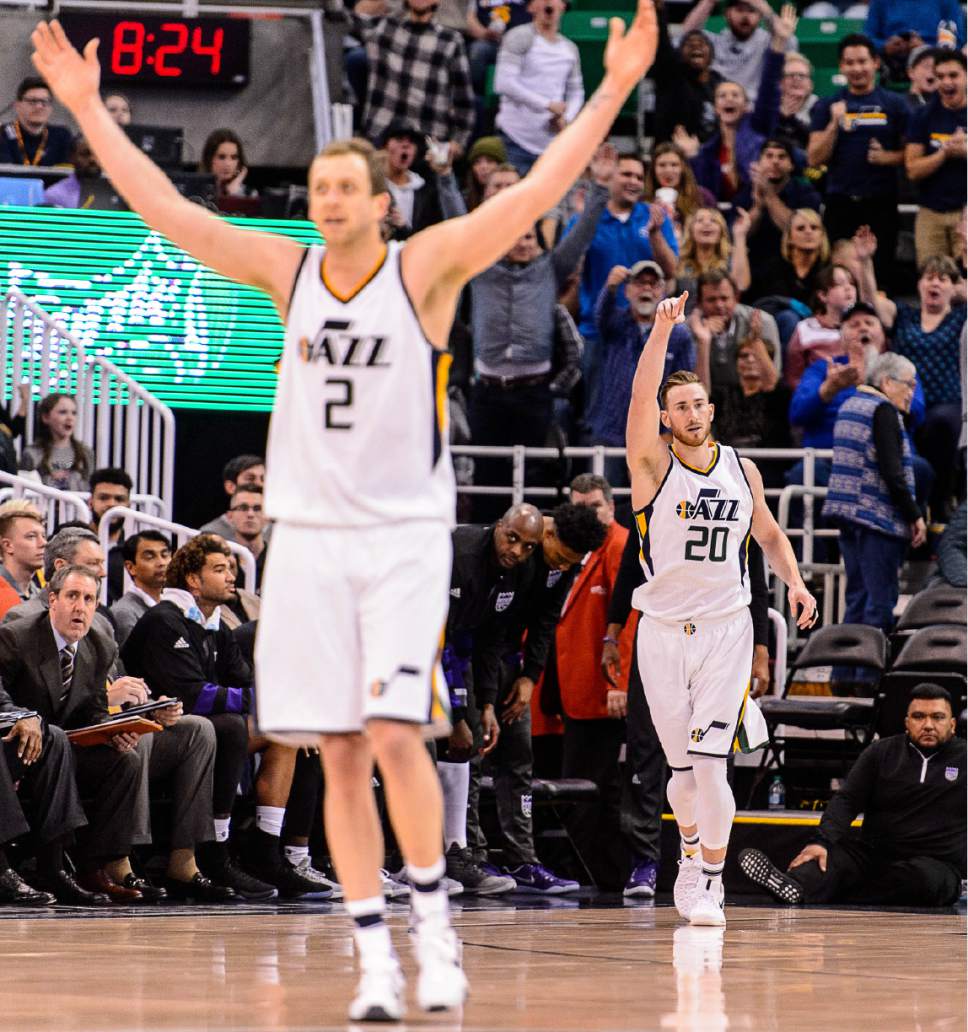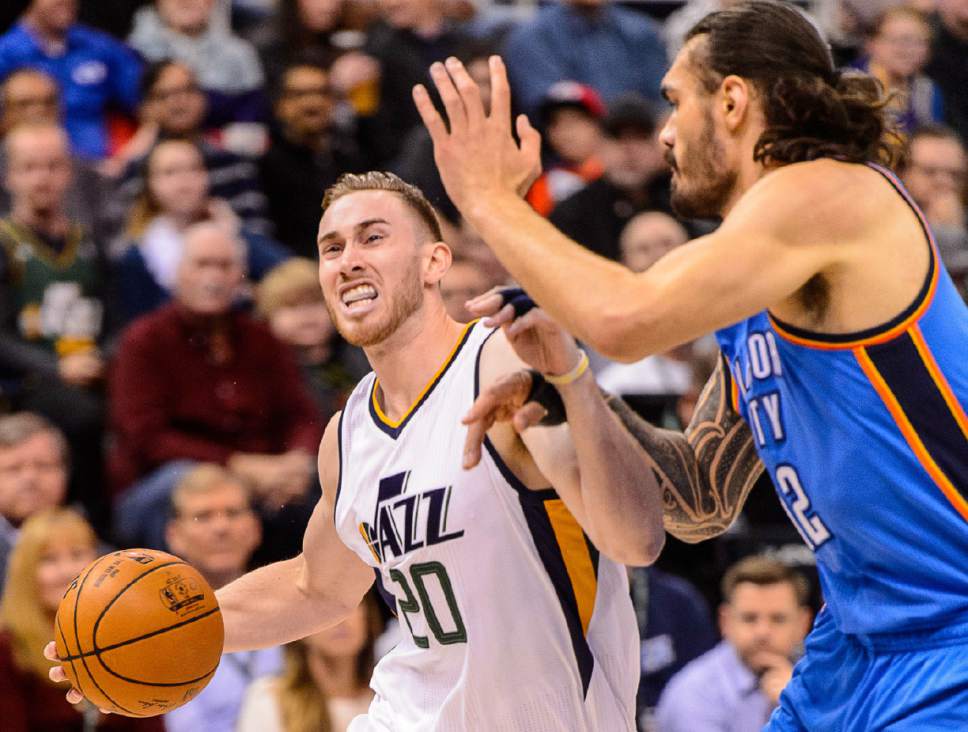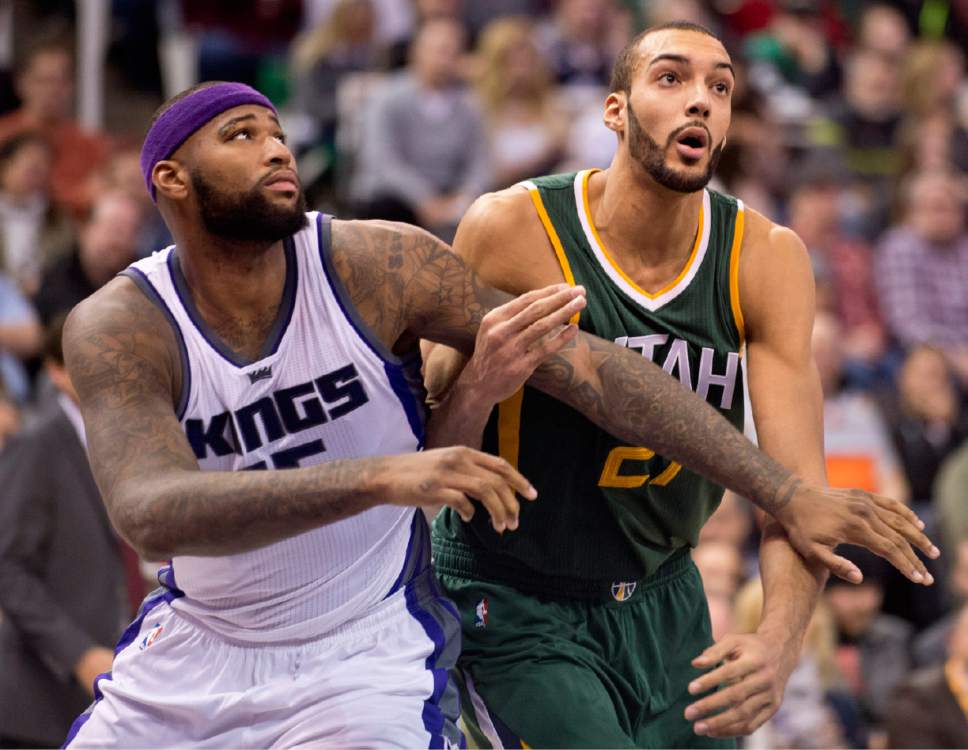This is an archived article that was published on sltrib.com in 2017, and information in the article may be outdated. It is provided only for personal research purposes and may not be reprinted.
The Jazz are improving and two things indicate it — one being about as tangible as anything can be — the numbers — and one being a bit more subtle — body language.
I'm no social scientist, but I've learned enough about nonverbal communication to recognize a few basics regarding positive, assertive indicators. And the Jazz are launching upward in that regard. Guys like Gordon Hayward and Rudy Gobert lead the way in body language that not only communicates improvement, it screams that they're going to beat you and maybe even laugh at your pain.
There is little evidence of panic with the Jazz, even in games when they fall behind, and we'll see if that holds up through the back half of the season and into the playoffs, when the climb gets considerably steeper.
For the time being, if 50 percent of all communication is nonverbal, the Jazz are being successful in informing opponents that they are a force to be reckoned with, that they may get beat now and again, but they will not go quietly.
Have you noticed this, too?
The way Hayward carries himself on the floor, especially compared to the way he once did, is different. Remember when Deron Williams threw a ball at Hayward in the middle of a game during his rookie season and yelled at him like a little puppy for not knowing the offense? If anyone now dared do that to Hayward, he'd get a death stare — and maybe an elbow — in return.
The aggressive stances, the confident posturing, the determined facial expressions are pretty plain to see. When Hayward spent that week during the offseason with Kobe Bryant, it appears that more than a few tricks of the trade were passed along. More like an entire attitude.
It's bigger than just that. Challenged by Dennis Lindsey and Quin Snyder to turbo-jack his game up to its full potential, Hayward worked diligently over the summer, transforming himself from just kind of a nice player to a worthy No. 1 option. And now he walks, runs, talks, passes, shoots, feels as though he deserves the favors of the basketball gods.
Hayward carries himself like he knows he's the best player on the court. Whether he actually is may be another matter, but if his mind tells his body he is, and his body tells his mind he is, he's a lot more likely to edge in that direction.
And the numbers back it up. Hayward is averaging 22 points, four assists and six rebounds with a 22.90 player efficiency rating. He was named the Western Conference player of the week Monday, having averaged 24 points, shooting 74 percent, including 60 percent from 3, in three straight victories.
All looking like a bad mother while doing so.
Those who study such things say powerful body language — open stances, leaning forward, chin up, hands on hips, making yourself appear large — can affect the way a player performs. It's a compelling notion, considering you normally might think it's the other way around.
One sports psychologist told me it goes both ways. He said something about the positive release of certain hormones allowing an athlete to perform at his peak by reducing the effects of other hormones, based on the physical and the mental. He said signals cascade through the body, depending on circumstances often influenced by pressure, that either help or hurt an athlete in performing better. He also said such phenomenon occurs in the animal kingdom, but that's where he lost me.
It's true for everybody, he said, from cooks to accountants, from homemakers to middle managers, from teachers to fighter pilots. When humans feel fear or doubt or negative or as though they've screwed up somehow, they tend to cover up or make themselves small. They fold their arms, hang their heads, and look away.
There are varying levels to such things, and anybody who's made it to the NBA hardly can be timid. But even within more elevated groups, players are still human, they still can feel and indicate uncertainty and discomfort.
Hayward and Gobert appear to feel neither.
I'll never forget looking at Gobert in the locker room, not long after he came back from playing for the Bakersfield Jam in the D-League and before the Jazz gave him much time. Everything about the man, his stance and expression, yelled to anyone willing to hear that, "Hey, when you guys are done goofing around and ready to win, call on me. I'm here."
He and his body still are yelling it.
Only now his play and the numbers also are screaming it.
Gobert averages 12 points, 13 boards and nearly three blocks. He ranks first in the NBA in defensive rating, first in blocks, second in effective field-goal percentage, fifth in rebounds and is the anchor to a team defensive disposition that is hateful.
Watch the way Gobert strides on the court, the way he handles himself in tight games, his open gestures, his … largeness.
Who knows whether all nonverbal signals actually indicate what social scientists say they do. Few things are always true. Some players, some people, may send messages of shyness and insecurity when they are confident and accomplished.
But in the case of the Jazz leaders, and the rest of the team, the actual performance — they now are 27-16 and ascending — is matching the body language.
What those bodies are saying is this: "We're good, we're getting better, deal with it."
GORDON MONSON hosts "The Big Show" with Spence Checketts weekdays from 3-7 p.m. on the Zone Sports Network, 97.5 FM and 1280 AM. Twitter: @GordonMonson.


